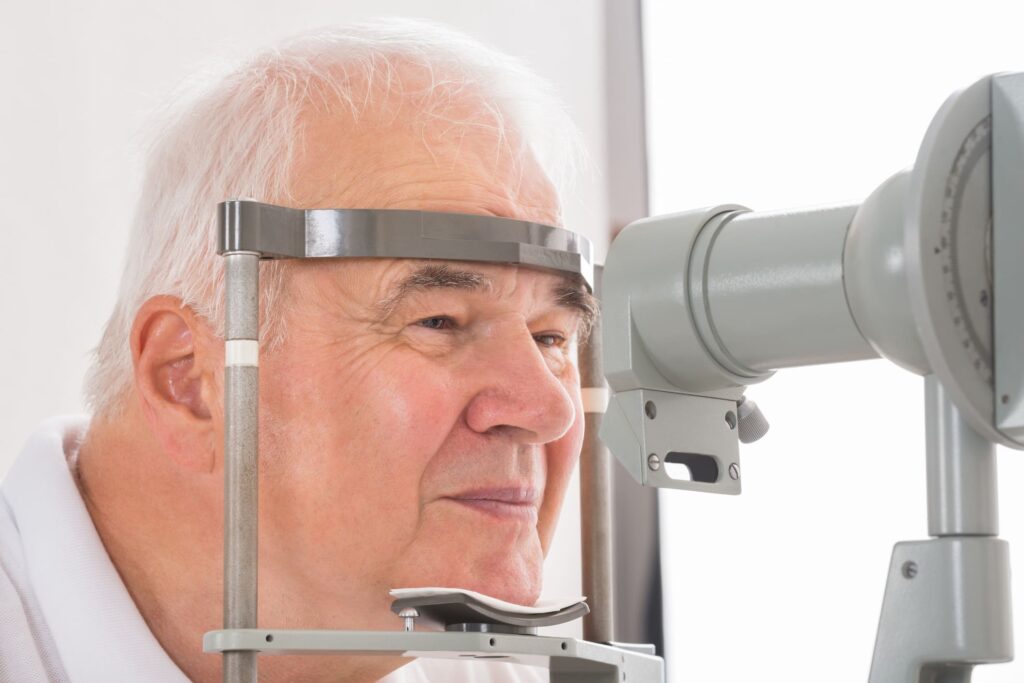How genetics are related to AMD and what you can do to reduce your risk?
There are several factors that can contribute to the development of age-related macular degeneration (AMD), one of which is family history. Recent research has tried to understand this relationship and determine which genes may contribute to the development of the disease.
Specific genes associated with AMD
Scientists have identified over 30 genes associated with AMD using genome-wide association studies1. These types of studies compare the genetics of people with the disease and those without the disease. They then identify which genes are more common in people with the disease.
Therefore, if researchers find that a lot of people with AMD have a particular gene that people without AMD don’t have, they reason that this gene is associated with its development. While there are many genes found to be associated with AMD, the two with the strongest relationship are:
- The complement cascade gene on chromosome 1
The complement cascade is thought to be associated with the accumulation of waste products like drusen, which are associated with AMD1. It’s thought that certain variations of this gene may affect the body’s ability to regulate complement, which can lead to drusen buildups and in turn, AMD2.
- The ARMS2/HTRA1 gene on chromosome 10
Genome-wide association studies have identified a gene called ARMS2/HTRA1 on chromosome 10 to be strongly correlated with AMD1,2. However, they don’t know what mechanism underlies this relationship1,2.
Genetics and AMD
While many genes have been associated with AMD, the relationship between genetics and AMD is complex, and specific genes alone cannot explain its development2. Although certain genes have been linked to AMD, some people without these genes end up developing the disease while others with the genes don’t2.
For this reason, scientists propose that many other factors influence whether people develop AMD in addition to having genes that pose an increased risk. These factors include:
- How different genes interact with each other2
- Environmental factors including but not limited to a person’s diet, how much they exercise and whether they smoke2
- How these environmental factors interact with genes by turning certain genes on and off2
- Having multiple versions of a certain gene within one person2

In essence, the relationship between genetics, environment and how certain genes are expressed is very complicated. This means that people who have genes associated with AMD may not develop it. On the other hand, people who don’t have genes known to be associated with AMD could also develop the disease if they’re exposed to certain environmental risk factors.

Gene therapies
While genome association studies show broad trends in the development of AMD, scientists say there is not much use in determining whether you have a specific gene to prevent its development1,2. In the future, they say personalized gene therapies could be beneficial for treatment; however, currently there are no existing treatments tailored to individual genetics1,2.
What you can do to reduce your risk
Since there are no gene therapies available to prevent the development of AMD, eye doctors say the best way to reduce your risk is to make changes to your lifestyle. If you know that macular degeneration runs in your family, you could consider making some of the following changes to lower your risk:
- Eat a healthy diet. Eating a healthy diet rich in fruits and vegetables can help your body clear harmful waste products that can contribute to macular disease3.
- Have regular eye exams. Getting regular eye exams can help you catch eye disease in its early stages before it progresses. Catching eye disease early before you start experiencing symptoms like loss of visual acuity can slow progression and help maintain your quality of life.
- Quit smoking. Smoking is one of the greatest risks for developing eye diseases like AMD2.
Certain diseases, like AMD, don’t have symptoms in their early stages and can only be detected by eye doctors.4 After detection, your eye doctor may recommend MacuMira Vision Therapy, a new eye non-invasive treatment for dry AMD that can restore vision.
Take control of your eye health today. If you’re concerned about your risk for AMD or want to learn more about preventative steps, schedule a consultation with your eye care provider. Early detection and proactive lifestyle changes can make a difference. Don’t wait—prioritize your vision and explore treatment options like MacuMira Vision Therapy to help maintain your quality of life. Contact our experts and learn more about this innovative treatment.
Disclaimer: Always speak to your primary health care provider and/or eye care provider before making any changes to your lifestyle, activities or diet.




